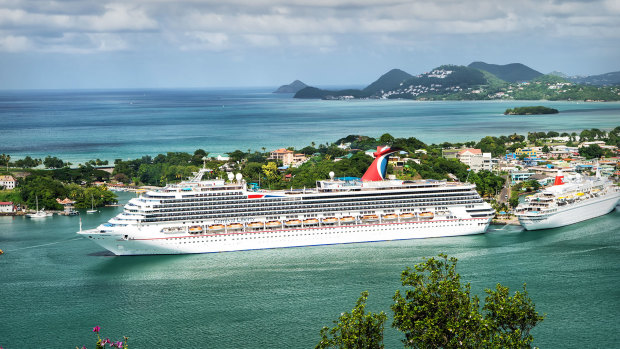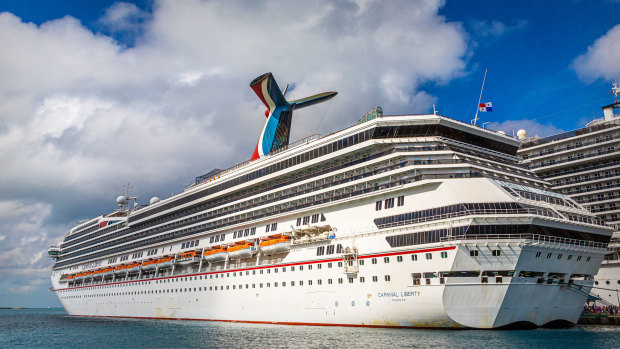
Cruise lines can't avoid that getting on and off its ships at the beginning and the end of your cruise often creates an uncomfortable situation for passengers. Embarkation (boarding the ship for the first time) and disembarkation (getting off when the cruise ends) both have their own unique problems.
During the boarding process cruise lines must get thousands of people through their terminals and on their ships. That involves a security check with bags and people going through an X-ray machine and a metal detector respectively, and showing documents including your ticket and your passport (or a birth certificate and license in some cases).
DON'T MISS: Carnival, Royal Caribbean Advance Massive Private Island Plans
It's a cumbersome process that's often made worse by people not sticking to their allotted boarding time. Getting on the ship, however, at least has the reward that once you get past it, your vacation begins. That makes it easier for people to put up with lines and hassles.
Disembarkation, however, comes at the end of your vacation and it happens in a compressed time period that's roughly 3 hours compared to 6-7 for the initial boarding. There's no bag scanning or metal detectors, but you do have to go through customs.
That can be a slow process as you wait for people to hand their passports to a customers officer who then has to make the appropriate checks. Carnival Cruise Line (CCL) -) has been using technology to speed up that process and get rid of manual checks at some of its ports. The cruise line is expanding those efforts and adding facial biometric technology at more US ports.
Rival Royal Caribbean (RCL) -) already uses the technology at many of its key US ports.

Image source: Shutterstock
Carnival Helps Passengers Get Home Faster
Getting off any cruise ship is a cumbersome process because it involves thousands of people going through customs in a few hours. You also have the complication of people having to wrangle their luggage and the general discontent that it's very early in the morning when the process starts.
Facial recognition makes the process easier and faster. Royal Caribbean has been using it in many of its terminals, and Carnival is expanding its use of the technology.
"Nine of Carnival’s 14 U.S. homeports are using this secure, streamlined technology, including Miami, Port Canaveral, Tampa, Jacksonville, New York, Baltimore, Mobile, Galveston, and Long Beach. Across the homeports where facial biometrics is being used, the debarkation process has been expedited by an average of 30% in the largest deployment of the technology in the cruise industry," the cruise line shared in a press release.
Instead of having to show their passport, passengers look into a camera that checks their identity against a stored version of their passport. In most cases, passengers walk forward after getting a green light. In rare cases, just like under the old system, people are flagged for further checks.
“Expanding this technology at our U.S. homeports ensures we’re doing everything we can to make the debarkation process as simple as possible for our guests,” said Carnival President Christine Duffy.
The technology successfully matches passengers and their passports and/or visas 98% of the time, Carnival's partnership U.S. Customs and Border Protection (CBP) has already improved the experience for more than 3 million Carnival guests.
US travelers and select foreign nationals who prefer to opt out of the facial biometric process can simply request a manual document check from a CBP Officer, consistent with existing requirements for admission into the United States, according to Carnival.







